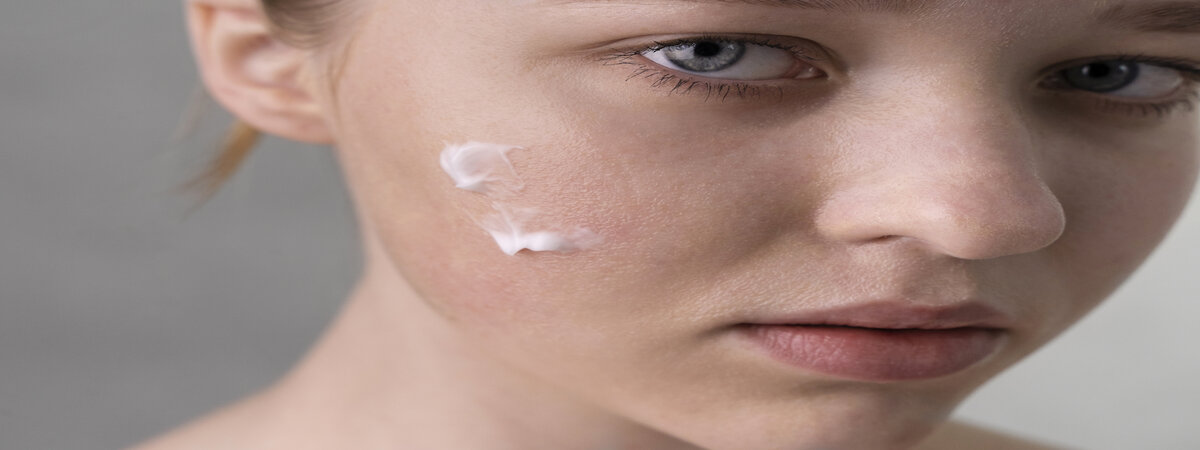
Dealing with a Scaly, Red Face: The Connection to Seborrheic Dermatitis, Dandruff’s Counterpart
Picture this: you wake up one morning, ready to tackle the day, only to catch a glimpse of your reflection in the mirror and notice something alarming—a scaly, red rash on your face. Panic sets in. What could this be? If you’re experiencing these symptoms, you might be dealing with seborrheic dermatitis, often referred to as dandruff’s counterpart on the face.
Understanding Seborrheic Dermatitis
Seborrheic dermatitis is a common inflammatory skin condition that primarily affects areas rich in sebaceous glands, such as the scalp, face, and upper trunk. It’s characterized by redness, scaling, and sometimes itching. While its exact cause remains elusive, factors such as genetics, hormones, certain yeast species, and environmental factors are believed to play a role in its development.
The Role of Our Dermatologists: Identifying Symptoms and Triggers
If you’re grappling with a scaly, red face, it’s essential to consult our dermatologists for a proper diagnosis. They can distinguish seborrheic dermatitis from other skin conditions with similar presentations, such as eczema or psoriasis. Moreover, our dermatologists can help identify potential triggers exacerbating your symptoms, whether it’s stress, cold weather, or certain skincare products.
Managing Seborrheic Dermatitis: Tips and Tricks
Gentle Cleansing: Opt for mild, fragrance-free cleansers to avoid further irritation. Harsh products can strip the skin of its natural oils, exacerbating seborrheic dermatitis symptoms.
Moisturize Regularly: Keeping the skin hydrated is crucial in managing seborrheic dermatitis. Choose non-comedogenic moisturizers to prevent clogging pores and aggravating the condition.
Antifungal Treatments: Since Malassezia yeast is believed to contribute to seborrheic dermatitis, antifungal agents like ketoconazole can be effective in controlling flare-ups. Our dermatologists can prescribe topical or oral antifungal medications tailored to your needs.
Avoid Triggers: Identify and steer clear of triggers that worsen your symptoms. Whether it’s stress, cold weather, or certain foods, minimizing exposure to these triggers can help keep seborrheic dermatitis at bay.
Sun Protection: Protecting your skin from the sun’s harmful rays is crucial, as sun exposure can exacerbate seborrheic dermatitis symptoms. Opt for broad-spectrum sunscreen with an SPF of 30 or higher and reapply regularly, especially if you’re spending extended periods outdoors.
Stress Management: Stress is known to exacerbate inflammatory skin conditions like seborrheic dermatitis. Incorporate stress-relieving activities into your daily routine, such as yoga, meditation, or deep breathing exercises, to help keep flare-ups under control.
The Importance of Consistency and Patience
Managing seborrheic dermatitis requires consistency and patience. While implementing these tips and tricks can alleviate symptoms, it’s essential to remember that results may not be immediate. Be patient with your skincare routine and continue working closely with our dermatologists to find the most effective treatment plan for you.
Conclusion: Embracing a Holistic Approach to Skin Health
Dealing with a scaly, red face can be distressing, but understanding the connection to seborrheic dermatitis sheds light on effective management strategies. By consulting our dermatologists, identifying triggers, and implementing a comprehensive skincare routine, you can regain control over your skin health and embrace a life free from the burden of flare-ups. Remember, prioritizing self-care and seeking professional guidance are the cornerstones of achieving radiant, healthy skin.
FAQ
Is seborrhoeic dermatitis contagious?
No, seborrhoeic dermatitis is not contagious. It’s a non-infectious inflammatory skin condition.
Can seborrhoeic dermatitis be cured?
While seborrhoeic dermatitis can’t be cured, it can be effectively managed with proper treatment and skincare routines.
Can seborrhoeic dermatitis affect people of all ages?
Yes, seborrhoeic dermatitis can affect individuals of all ages, from infants to the elderly.
Are there any natural remedies for seborrhoeic dermatitis?
Some natural remedies, such as tea tree oil or coconut oil, may provide temporary relief, but it’s essential to consult a dermatologist for proper treatment.
Can seborrheic dermatitis cause hair loss?
In severe cases, seborrheic dermatitis may lead to temporary hair loss, but it’s typically reversible with proper treatment.


